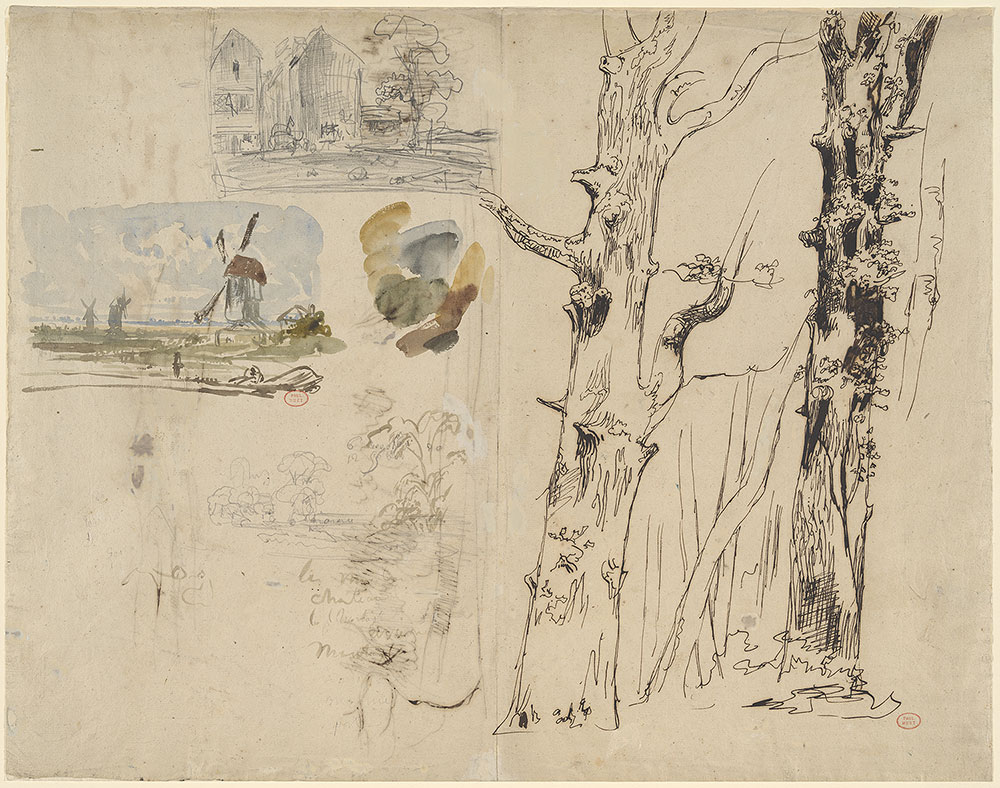
Huet was one of the leading French landscape watercolorists during the Romantic era, and his work was critical to later developments at Barbizon and in the forests of Fontainebleau. This large sheet is an exceptional example of the artist's early work developing motifs for painted compositions. The watercolor vignette of a field with windmills was used for an oil of ca. 1820, Windmills Near Glacière, now in the Musée Carnvalet, Paris, where the scene is enlivened by washerwomen in the foreground. Glacière was a hamlet on the path from Paris to Gentilly, situated along the Bièvre river among marshes and swamps, providing a place for winter amusements and harvesting ice.
Huet was seventeen years old at the time, a student of Antoine-Jean Gros and at the Ecole des beaux-arts, and had recently met the English watercolorist Richard Parkes Bonington. Glacière, now in the thirteenth arrondissement of Paris, would have been close enough to make an excursion and work en plein air. At right, Huet drew textured tree trunks using a heavy application of iron gall ink, while at left, he worked in graphite and watercolor to depict compact scenes of houses and the neighborhood's windmills and tested his brush. The verso contains further drawings of tree trunks revealing Huet's commitment since childhood to work outdoors. This sheet also captures his interest in depicting broad landscape views and closely scrutinizing elements of the natural environment. Huet's estate stamp was applied twice: once at lower right of the sheet, as is normal, and a second time at lower right of the watercolor vignette at left, likely with the presumption the unusually large sheet would be cut into several smaller studies.
Cohen, Karen B., former owner.
